Chandrayaan-3: How we voyaged to the moon before we even set foot there


It wasn’t until as recently as 1969 that an Earthling first landed on the moon. Until then, the moon had been the cause of endless speculation by philosophers and astronomers, vicariously imagined by artists and poets, while the ill howled at the moon’s morbid waxing and waning, and lovers turned their gaze to it, fetchingly.
Even the conception of the Gods was the result of feverish speculation from a people overcome by the Moon’s aura. What mysteries lay in store beneath its luminescent face? What unspeakable things happened upon its surface when it curved into its veil of darkness?
Pictured above are two faces of the Moon goddess across time and place: An engraving depicts Diana, the Roman goddess of the moon and the hunt in Roman mythology, riding a chariot circa 10,000 BC. A Pahari school miniature shows Chandi, the Moon Goddess circa 1810.
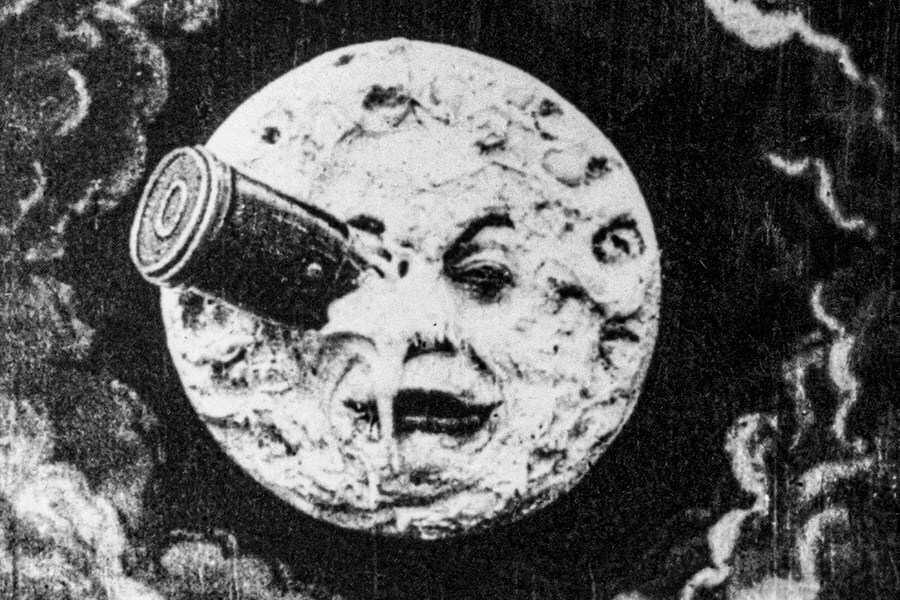 Image: Getty Images
Image: Getty Images
Landing on the eye of the Moon - an iconic scene from the 1902 science-fiction adventure film ‘A Trip to the Moon’. Directed by George Melies, the silent animated film about a group of astronomers who travel to the Moon in a cannon-propelled capsule, became one of the most influential films in cinematic history.
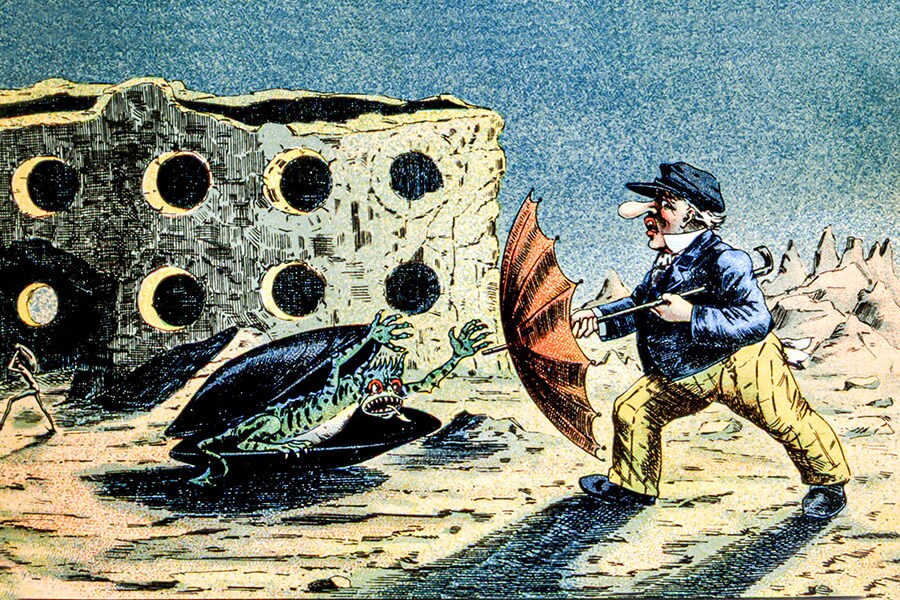 Image: Getty Images
Image: Getty Images
The scientist academician Monsieur Babulifish encounters strange creatures on the Moon in the book "Journey to the Moon on the eve of 1900". These fantastic drawings by the author A. de Ville d"Avray became a sought-after publication in the history of science fiction after its release in 1892.
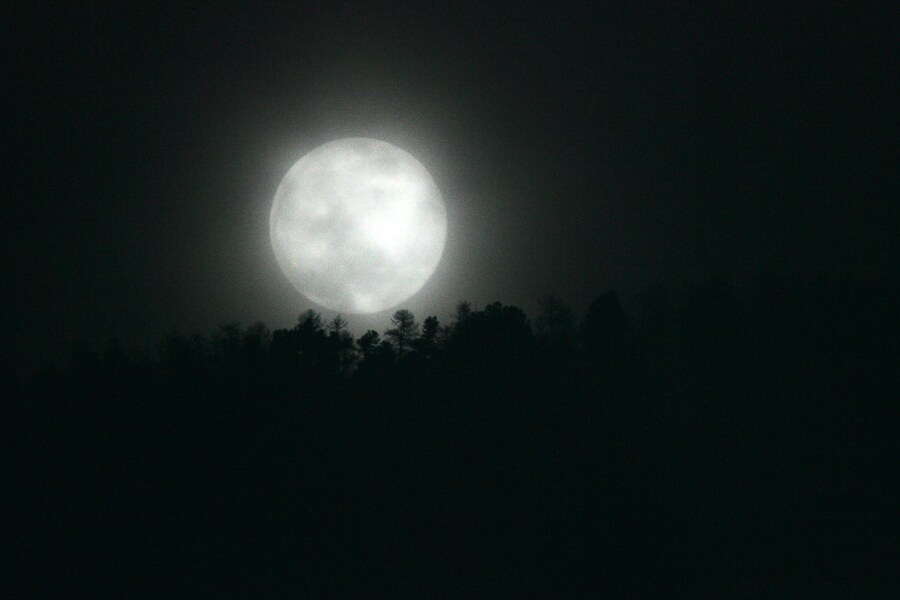 Image: Getty Images
Image: Getty Images
The astronomer-mathematician who correctly ascribed the luminosity of the Moon and planets to reflected sunlight was Aryabhata the Elder in his work Aryabhatiya, presenting a number of innovations in mathematics and astronomy in verse form. Born 476, possibly Ashmaka or Kusumapura in India, Aryabhata’s other work Aryabhatasiddhanta had a profound influence on the development of Islamic astronomy. His astronomical calculation methods and trigonometric tables were used to compute many Arabic astronomical tables.
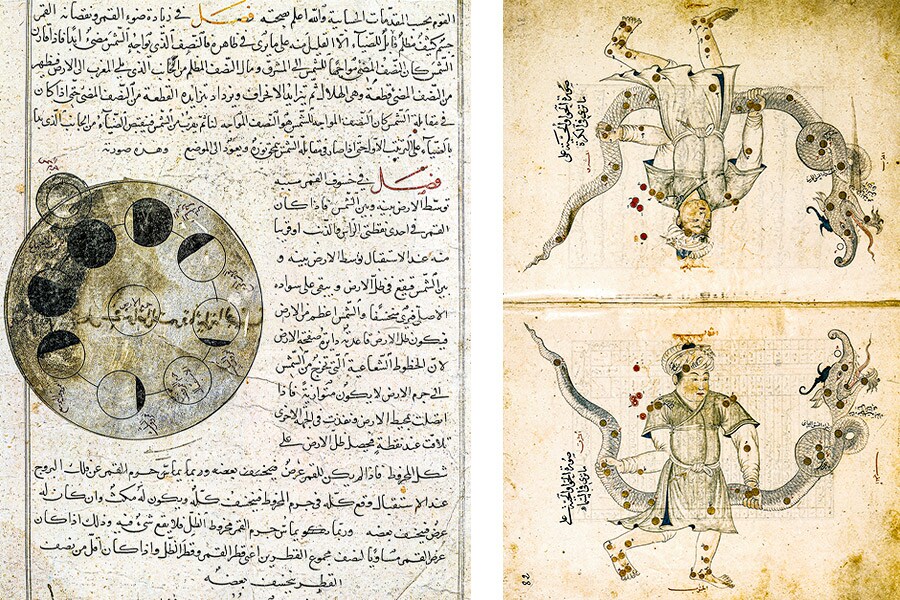 DeAgostini/Getty Images
DeAgostini/Getty Images
Astronomy pioneers in Islamic civilisation built powerful observatories and named galaxies, stars and features on the moon. 1. Phases of the moon, miniature from the Wonders of Creation, Arabic manuscript, 14th Century. 2. Miniature from the Book of Fixed Stars, by Azophi (Abd al-Rahman al-Sufi), Arabic manuscript, 11th Century.
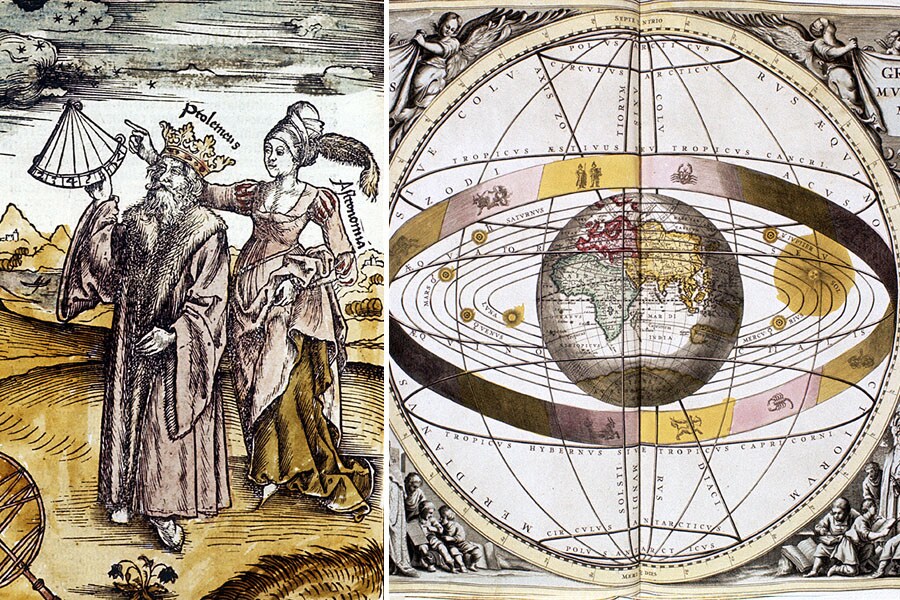 Ann Ronan Pictures/Print Collector/Getty Images
Ann Ronan Pictures/Print Collector/Getty Images
Claudius Ptolemy, a 2nd Century Greek mathematician, astronomer, and geographer uses a quadrant to observe the moon and stars, instructed by Urania, the Muse of Astronomy. On the right, an illustration shows the position of the sun, moon, and planets and the band of the ecliptic. Proposed by Claudius Ptolemy in the 2nd Century AD, his theory of Earth-centred arrangement of the Universe was accepted scientific wisdom until Nicolaus Copernicus (1473-1543) proposed his alternative sun-centred model in 1543.
 Oxford Science Archive/Print Collector/Getty Images
Oxford Science Archive/Print Collector/Getty Images
A sketch of the moon by Galileo Galilei, the Italian astronomer and physicist, circa 1635. On a November night in 1609, Galileo Galilei trained his telescope on the Moon for the first time and discovered mountains on its surface, thus overturning an Aristotlean belief that celestial bodies were unchanging, smooth, perfect spheres.
 Heritage Art/Heritage Images via Getty Images
Heritage Art/Heritage Images via Getty Images
Pierre Milan’s engraving of Callisto and a disguised Jupiter. In this painful Roman myth, Jupiter—disguised as Dianam the Goddess of Moon and Chastity—seduces Callisto, a nymph who had sworn to remain unwed, and violates her. A pregnant Callisto is turned into a bear and killed by an enraged, jealous companion. Jupiter swoops down, takes Callisto’s body, and sets it in the sky as the “Great Bear"—Ursa Major.
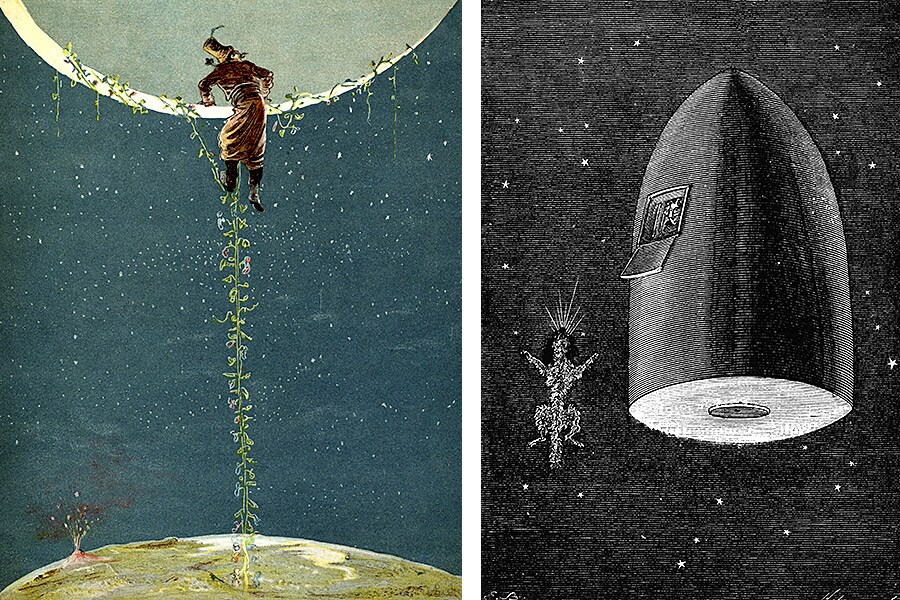
Universal History Archive/Getty Images Photo 12/Universal Images Group/ Getty Images
(left) The Baron climbs up to the moon by way of a quickly growing Turkey bean plant, to find the missing honey bee thats flown upwards, to the moon. Illustration by Alphonse Adolf Bichard from the book The Adventures of Baron Munchausen published c1886.
(right) The pet dog "Satellite" dies onboard and is dropped into space from the capsule in free fall towards the Moon. From Jules Verne “Around the Moon", Paris, 1865.Verne described trips in his book that would accurately calculate and resemble Apollo 11"s mission decades later.
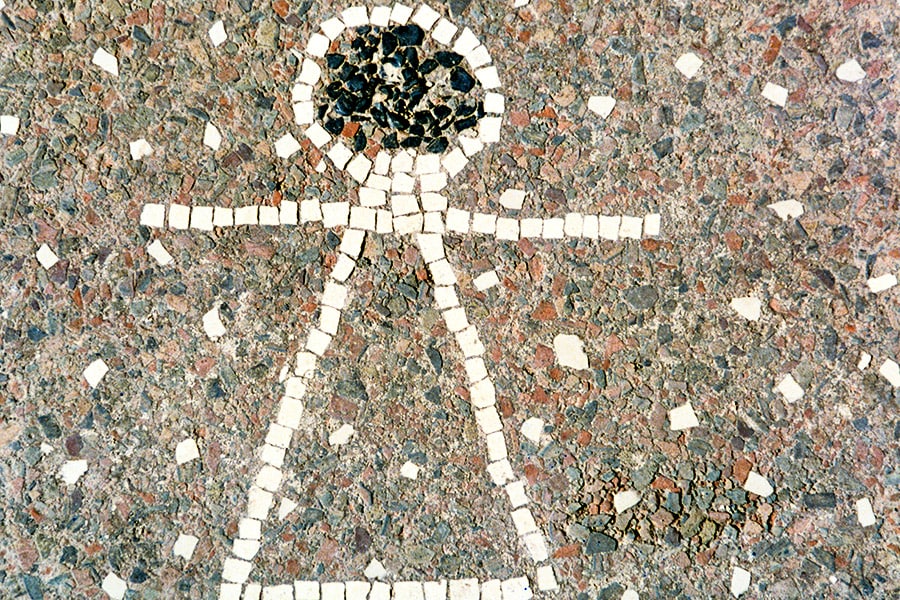 Art Media/Print Collector/Getty Images
Art Media/Print Collector/Getty Images
Mosaic of Tanit, Cartaginian, 3rd century BC, from the collection of the Bardo Museum, Tunisia. Tanit was a Phoenician lunar goddess worshipped as the patron goddess of Carthage.
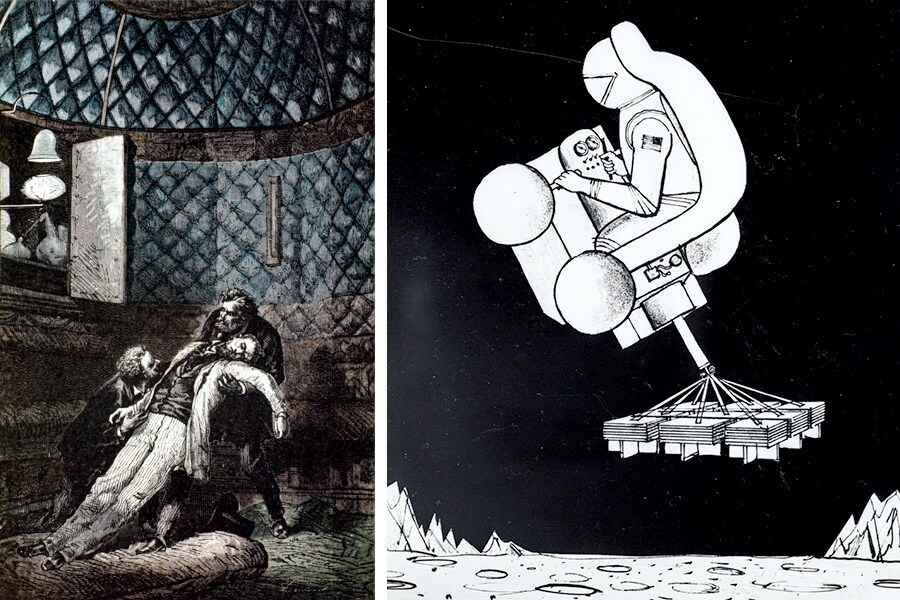 Ann Ronan Pictures/Print Collector/Getty Images
Ann Ronan Pictures/Print Collector/Getty Images
Illustration from "From the Earth to the Moon" by Jules Verne, 1865. There’s an emergency in the padded interior of the space capsule "Columbiad" as one of the astronauts loses consciousness.
Drawing of a Lunar Pogo Stick for astronauts circa 1967, designed at Stanford University “will take advantage of the moon"s weak gravity to hop across the rugged moonscape in 50-foot jumps. Gyroscopes will keep the astronaut upright. Compressed gas in globes will fuel the piston bouncing mechanism at about 10 miles to the gallon. Other globes contain rocket fuel for jet steering to safe landing".
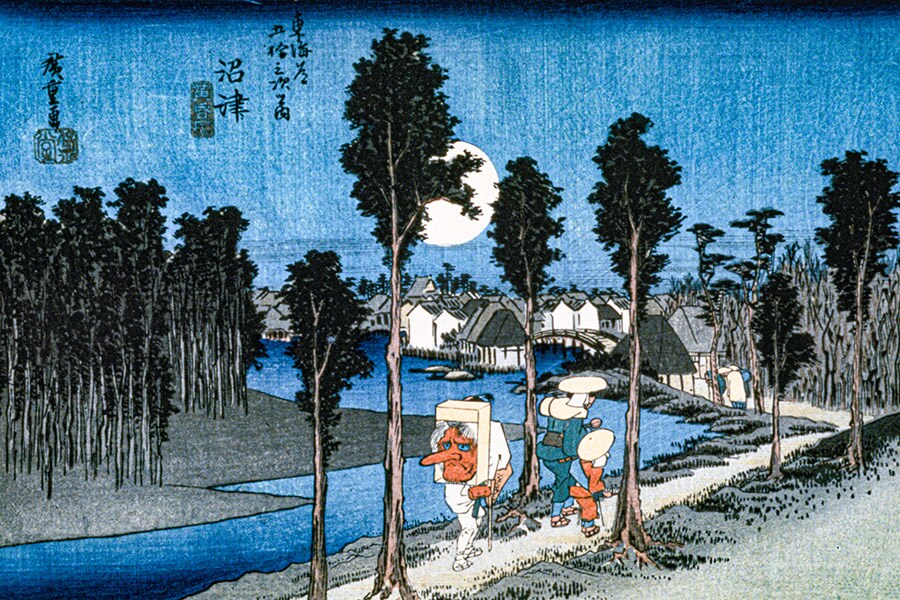 Universal History Archive/Getty Images
Universal History Archive/Getty Images
‘Moon at Numazu" from the series "The Fifty-three Stations of Tokaido", c1832. In a tree-lined road by a river bathed in the light of the full moon, pilgrims walk towards the town. Coloured woodblock print by Ando Hiroshige, Japanese artist, and printmaker.
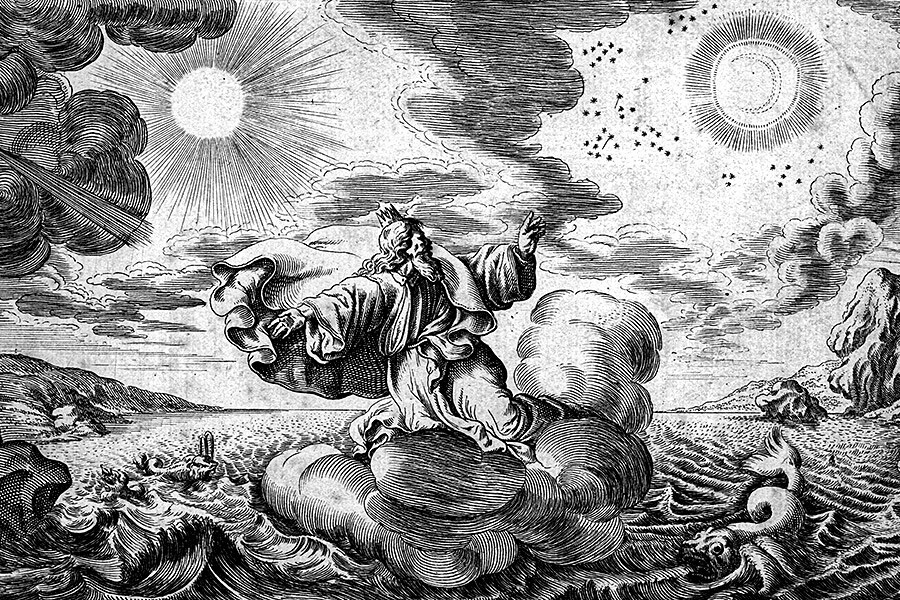 Hulton Archive/Getty Images
Hulton Archive/Getty Images
An artist’s conception of the God’s creation of night and day, circa 1750
 LMPC via Getty Images
LMPC via Getty Images
Poster shows the actor Max Schreck in the film "Nosferatu: A Symphony of Horror". The 1922 silent German expressionist horror film was also the first film to show a vampire dying from exposure to sunlight. Previous vampire novels such as Dracula had shown them being uncomfortable with sunlight.
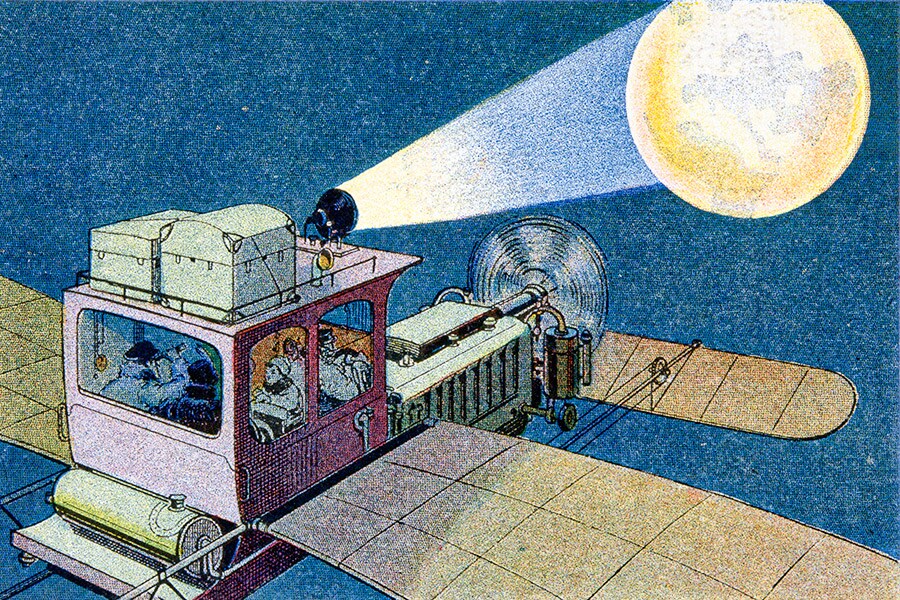 Universal History Archive/Getty Images
Universal History Archive/Getty Images
An early 20th-century trade card imagining fashionable travel in 2012: Returning to the moon in a private biplane. In eight hours it has been possible to go to Paris and buy Chocolat Lombard before returning back to the moon in a private biplane.
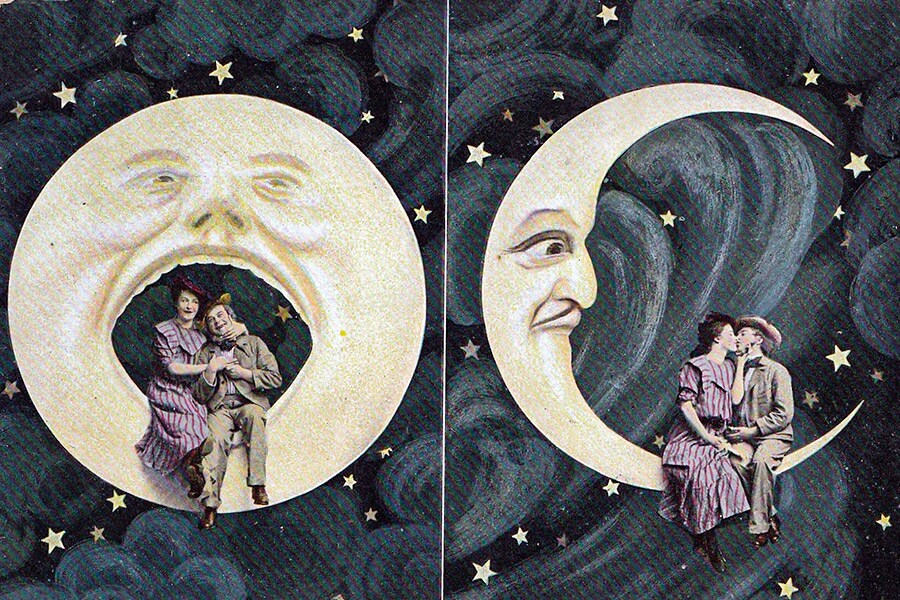 Nextrecord Archives / Getty Images
Nextrecord Archives / Getty Images
Illustrated photo postcard published in 1907 titled "Spooning the Moon" depicts a humorous and romantic couple kissing while posing on a large paper moon.
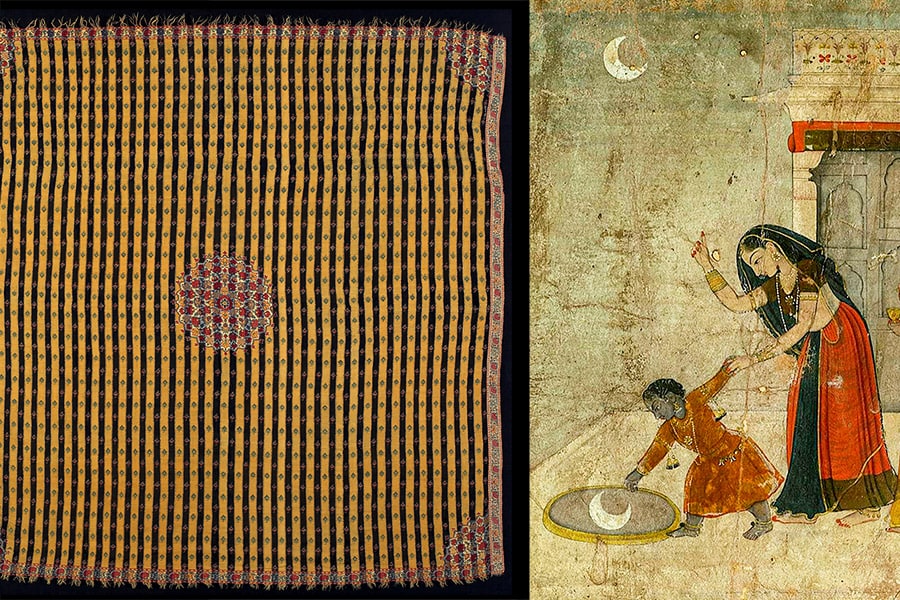 Heritage Images via Getty Images Courtesy Allahabad Museum
Heritage Images via Getty Images Courtesy Allahabad Museum
A moon shawl (Chand-Dar) from Mughal period India (1526-1858), artist unknown.
The child Krishna rushes to catch a reflection of the moon that his mother Yashoda points to. Indian miniature painting, Kangra region, Himachal Pradesh, 18th century.
First Published: Aug 23, 2023, 18:25
Subscribe Now